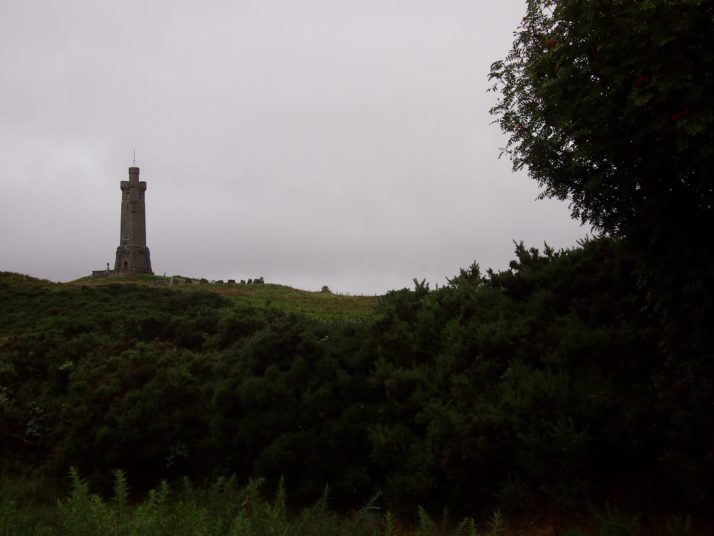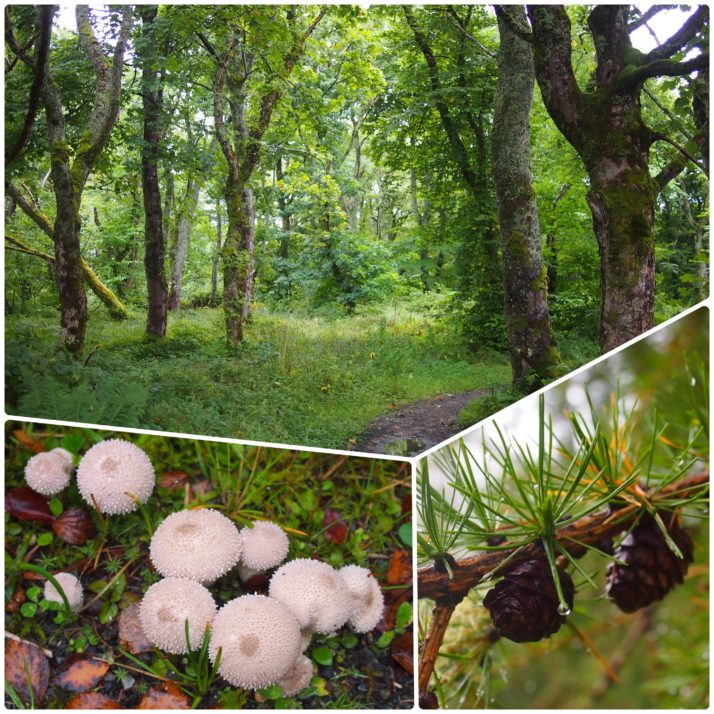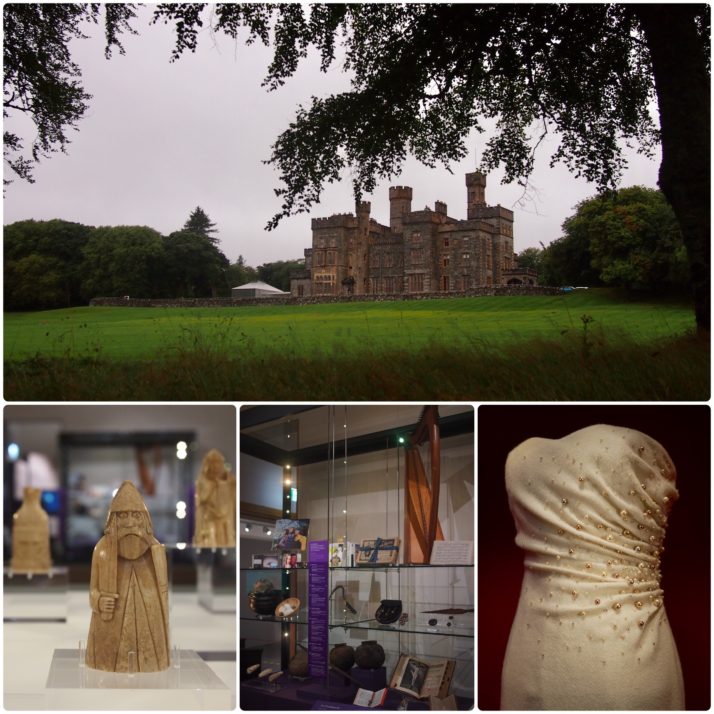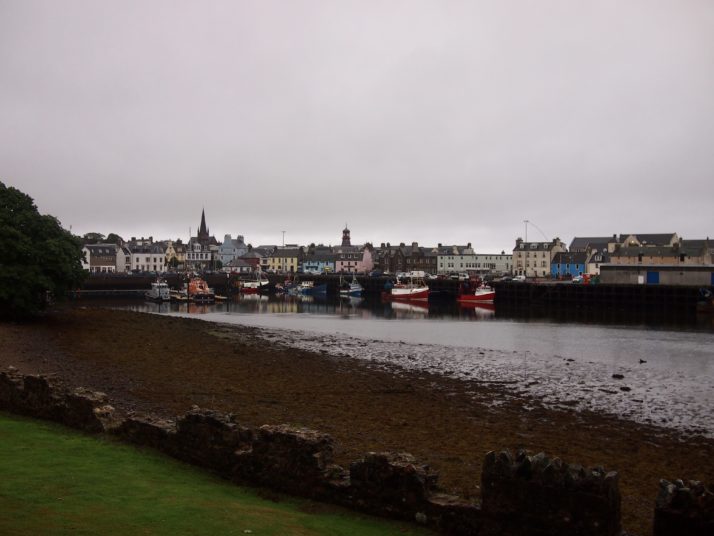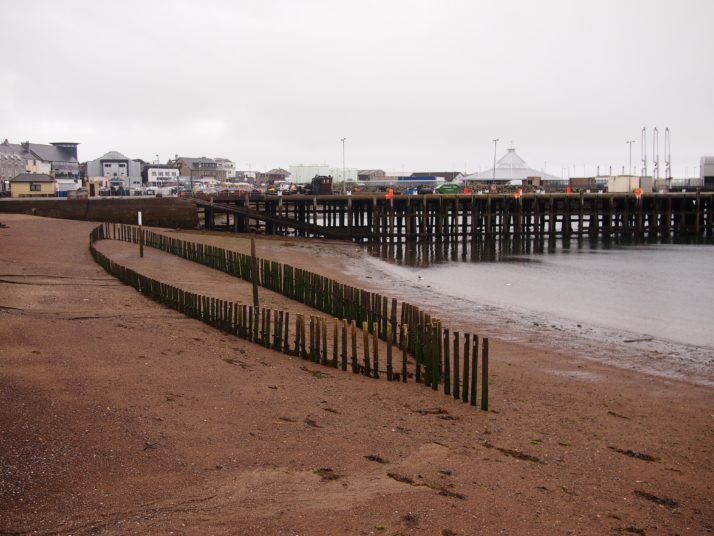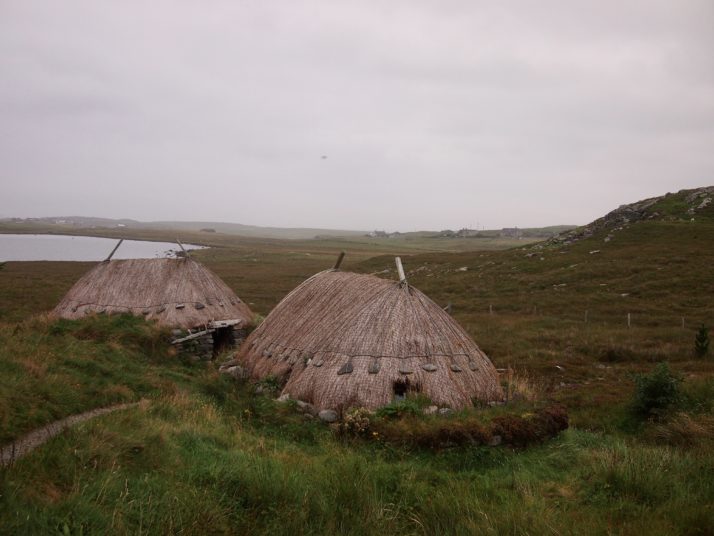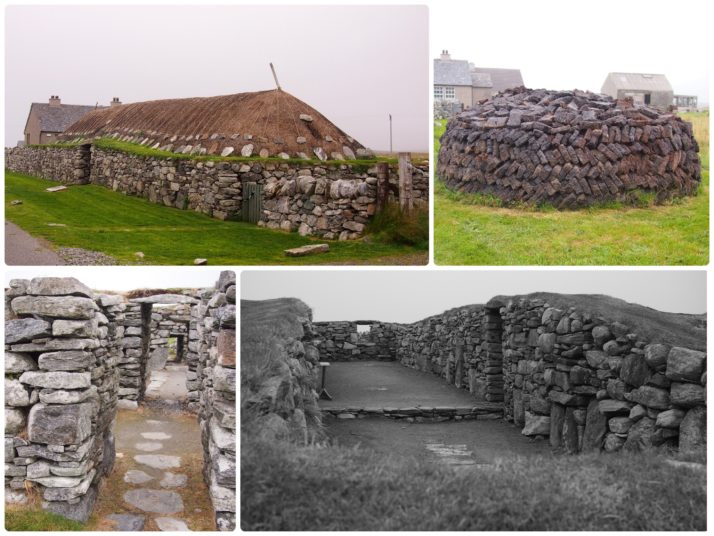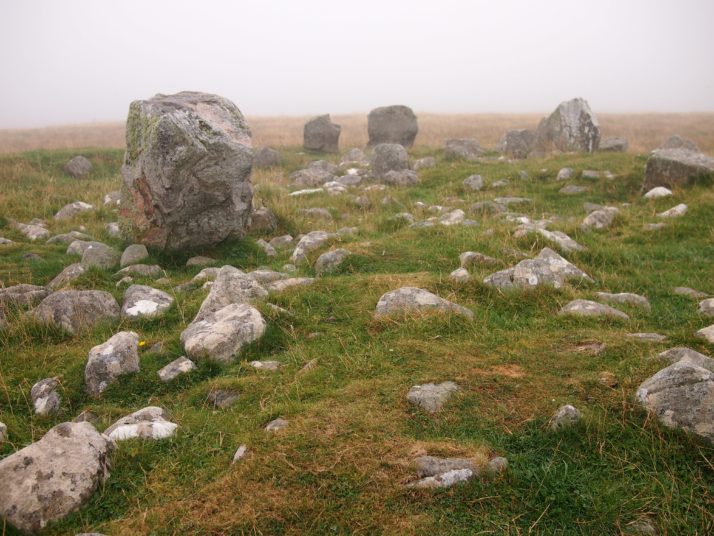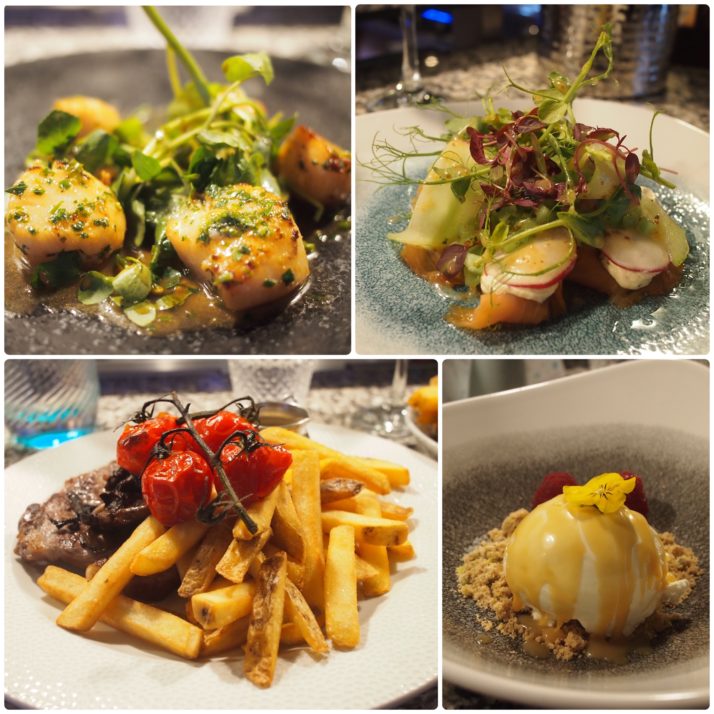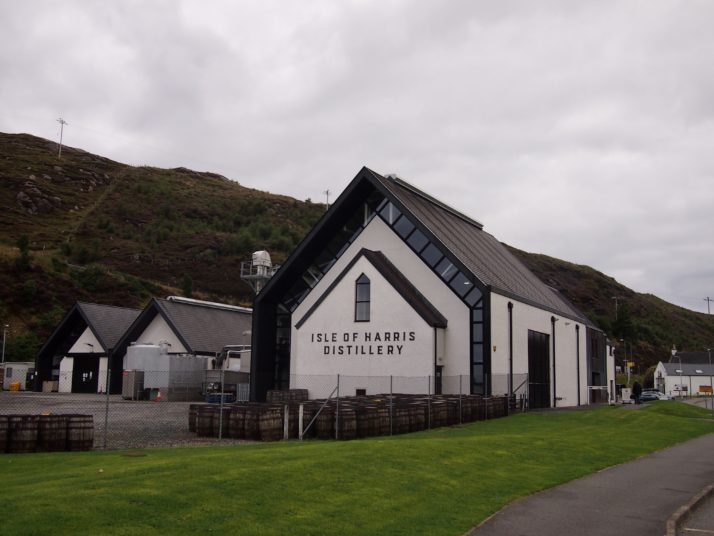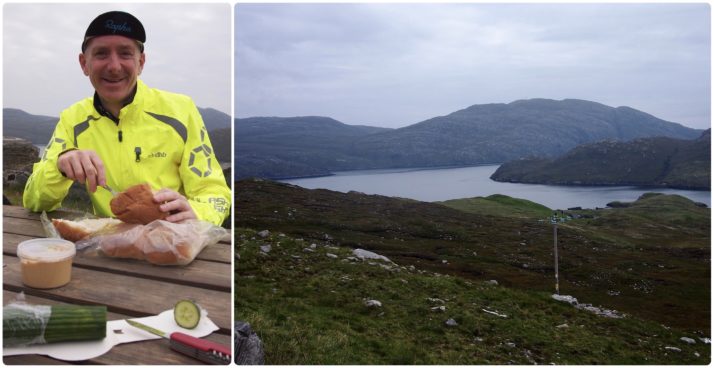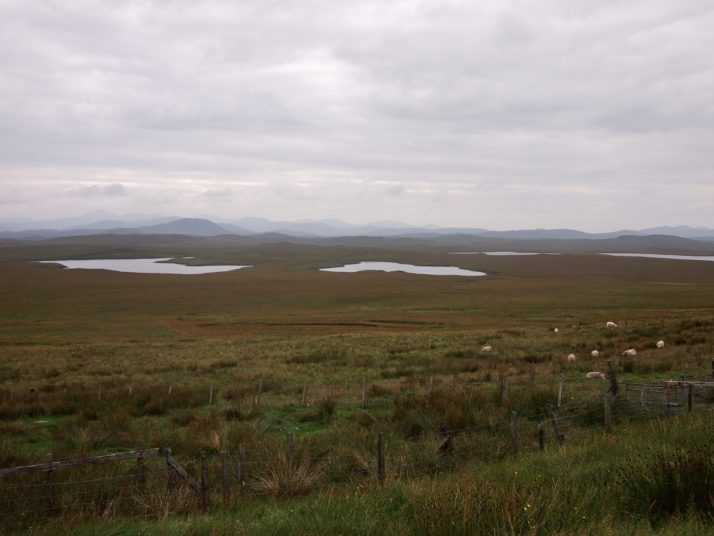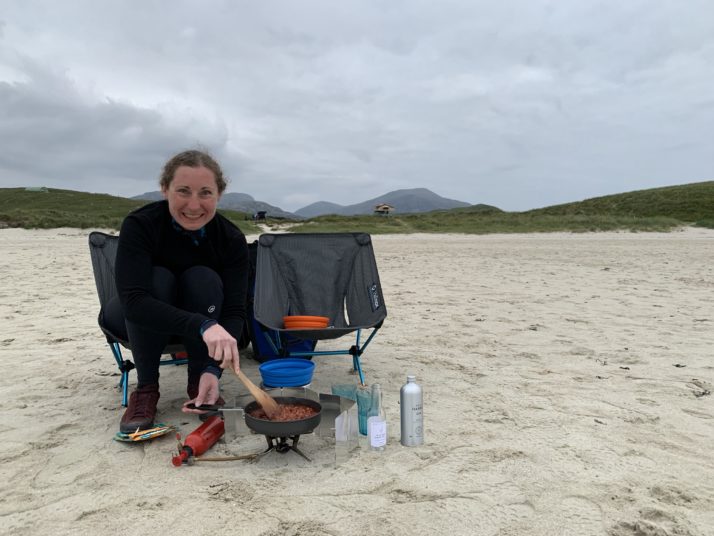| Distance cycled |
37.9 miles / 61 km |
| Cumulative distance cycled |
239.2 miles / 385.1 km |
| Islands visited (daily total) |
Lewis |
| Total islands visited |
10+1 of 10 |
| Average speed |
10.7 mph / 17.2 kmph |
| Weather conditions |
Overcast with mizzly rain showers |
When we were packing, we’d debated whether we should pack our swimwear and in the end decided yes – I’d had visions of lounging in the sun on the white sand beaches. As it turned out, it was a bit chilly for sunbathing but Andrew was adamant that he wanted a swim in the sea and as we were camped right next to the beach, today seemed the best opportunity. I wasn’t brave enough for full immersion and went for a paddle instead though actually the water was a lot warmer than I’d expected and maybe I would have been OK.
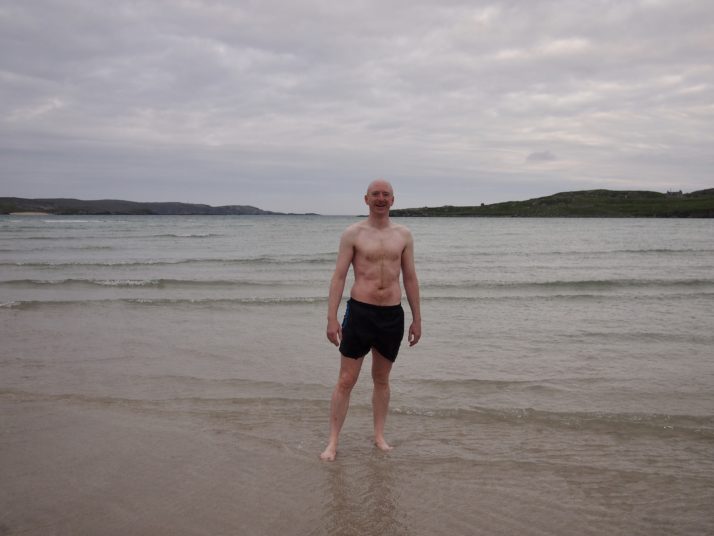
Andrew refreshed from his early morning dip in the sea
We set off cycling back towards the Hebridean Way route. For the first 10 miles we had a headwind but eventually the road turned and the going was easier. First stop of the day was at Callanish IV, a small stone circle which we’d seen from the road as we passed by 2 days before. I always find ancient sites like this magical, it blows my mind to think about how long they’ve been there and the people who constructed them.
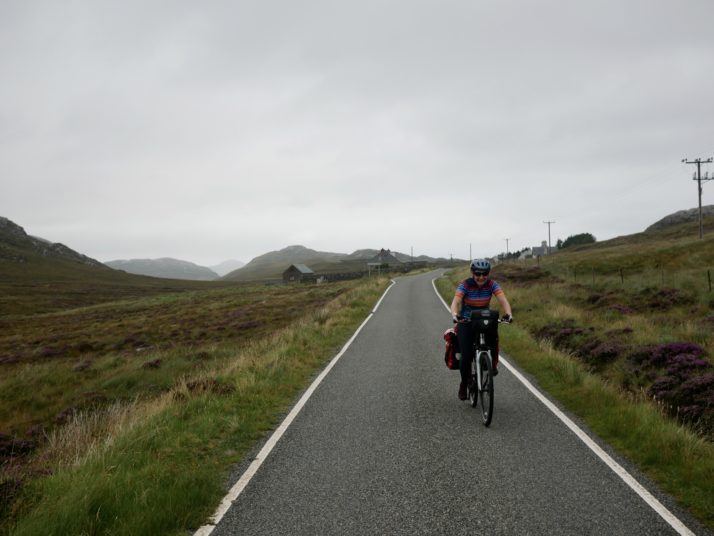
Julie battling the headwind on the road near Loch Roag Beag
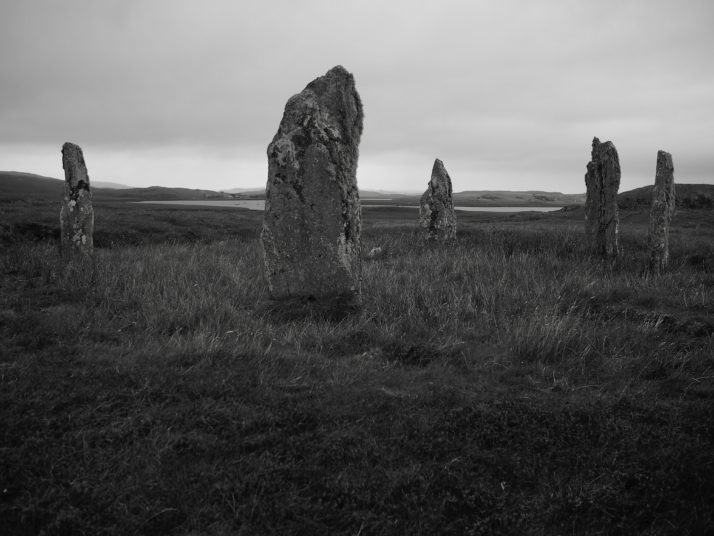
Callanish IV: there are more than 15 other sites with stone circles or standing stones in the area surrounding the Callanish Standing Stones
From there it was only a few miles to the famous stone circle at Callanish known simply as the Callanish Standing Stones. The weather wasn’t great with intermittent drizzly rain so I’d hoped we might be able to get lunch at the cafe. Unfortunately it’s closed on Mondays so we sheltered under the canopy over their outdoor tables and ate the bread and pate that we’d bought earlier.
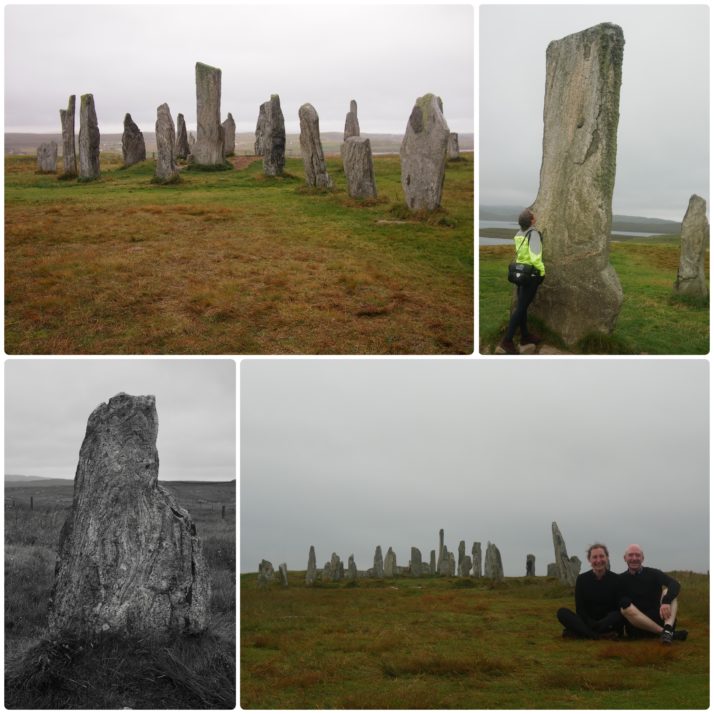
Callanish Standing Stones (clockwise from top left): the stone circle; Julie with the central monolith; us with the Stones; many of the stones had wonderful patterns in them
The Stones themselves form a cross shaped pattern around a central stone circle and were erected 5,000 years ago which makes them older than Stonehenge. Unlike at the more famous stone circle you can walk right up to them, and they’re free to visit too. We spent quite a while wandering around, taking photos from different angles and admiring the patterns in the stones and the height of the central monolith (4.75m).
After a quick diversion when we noticed a roadside stall advertising fudge we stopped in at Dun Carloway, the remains of a 2,000 year old broch, a kind of double walled roundhouse.
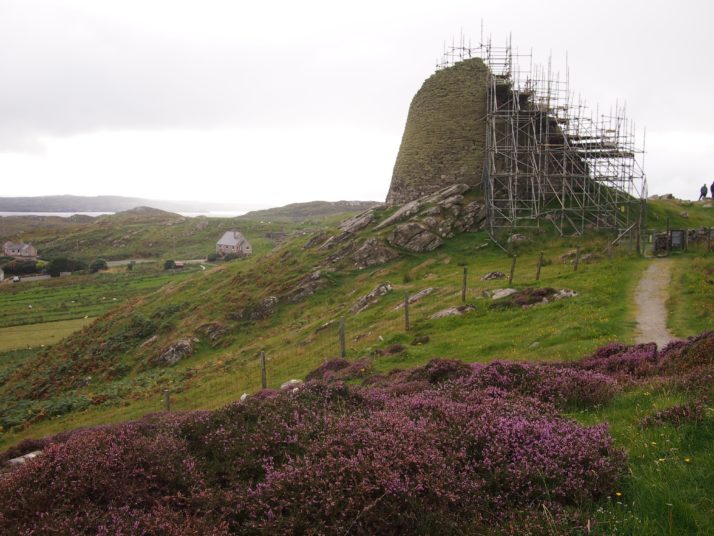
Unfortunately at the moment the broch is shrouded in scaffolding awaiting work to reseat loose stones
The poor weather had made for a tiring day and we were on the look out for somewhere to eat dinner so that we wouldn’t have to cook for ourselves. After the false promise of a knife & fork symbol on our route map we arrived in Shawbost. I was in favour of giving up and just checking into the campsite but Andrew had found the pin for a cafe on the online map so we detoured up a side road. We almost didn’t find Mollan’s Rainbow Shed and even when we did it didn’t look promising for dinner unless we wanted cake, but Andrew asked the owner, Julie, if she had anything more substantial. “Oh yes, there are homemade curries and pilau rice in the freezer, I can warm them up for you if you like”. Finished off with her chocolate “peat-bog” pudding, and with interesting conversation thrown in as well it was a perfect end to the day.
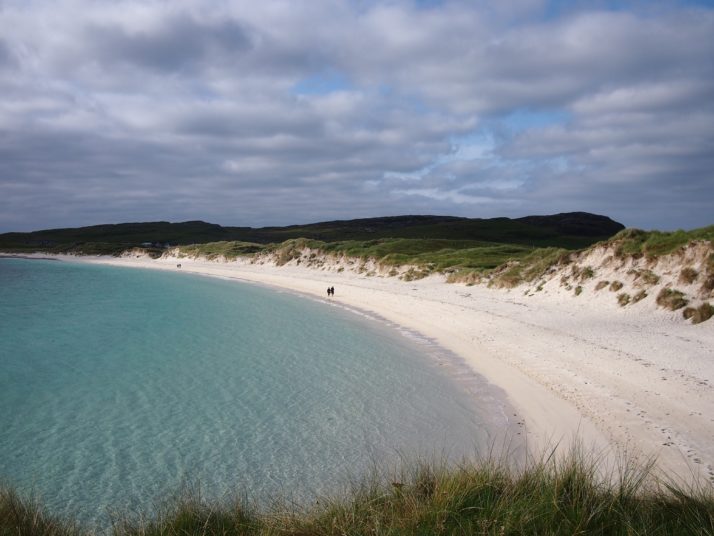
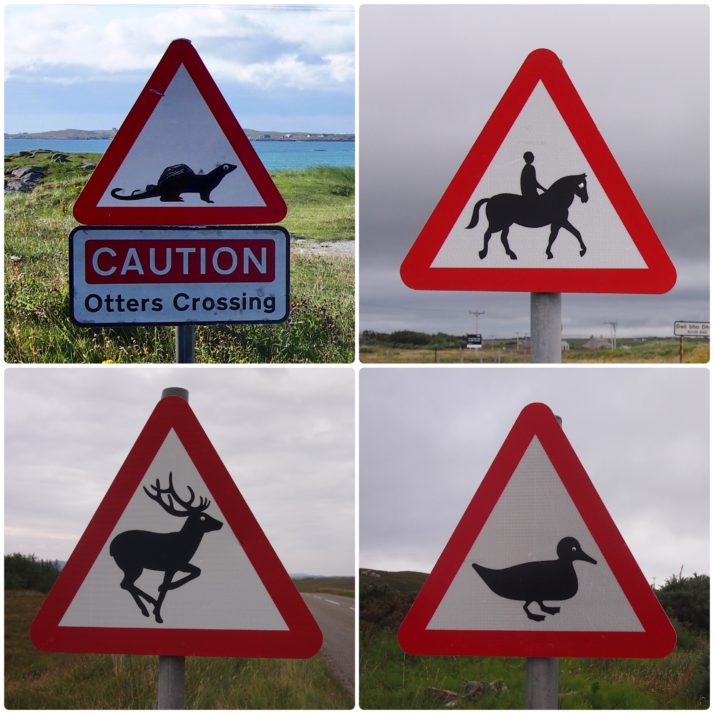

 two year trip
two year trip